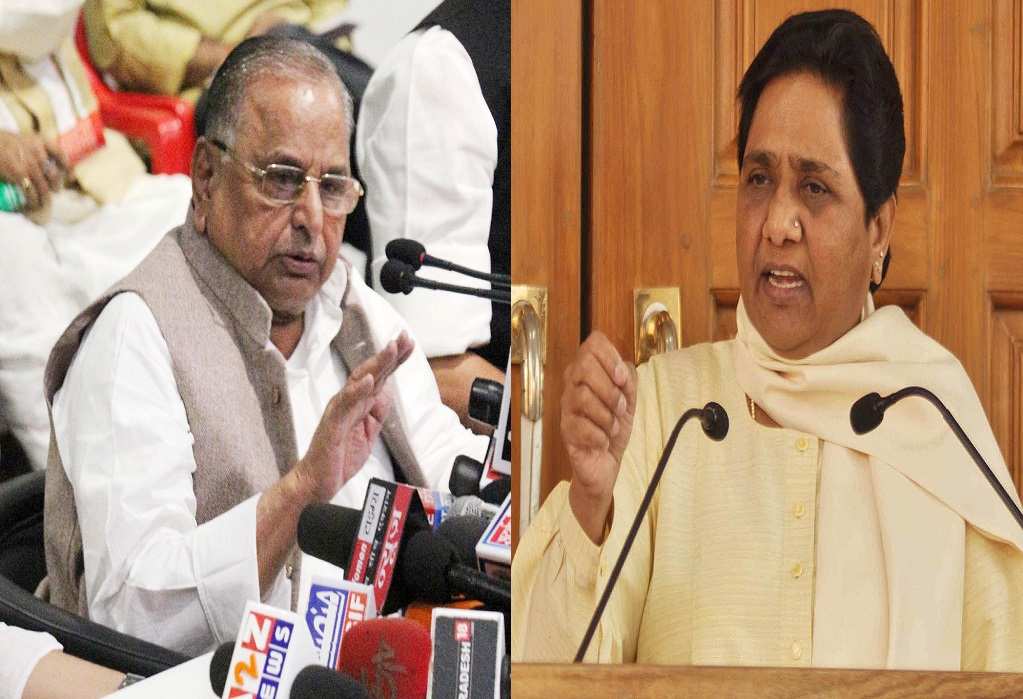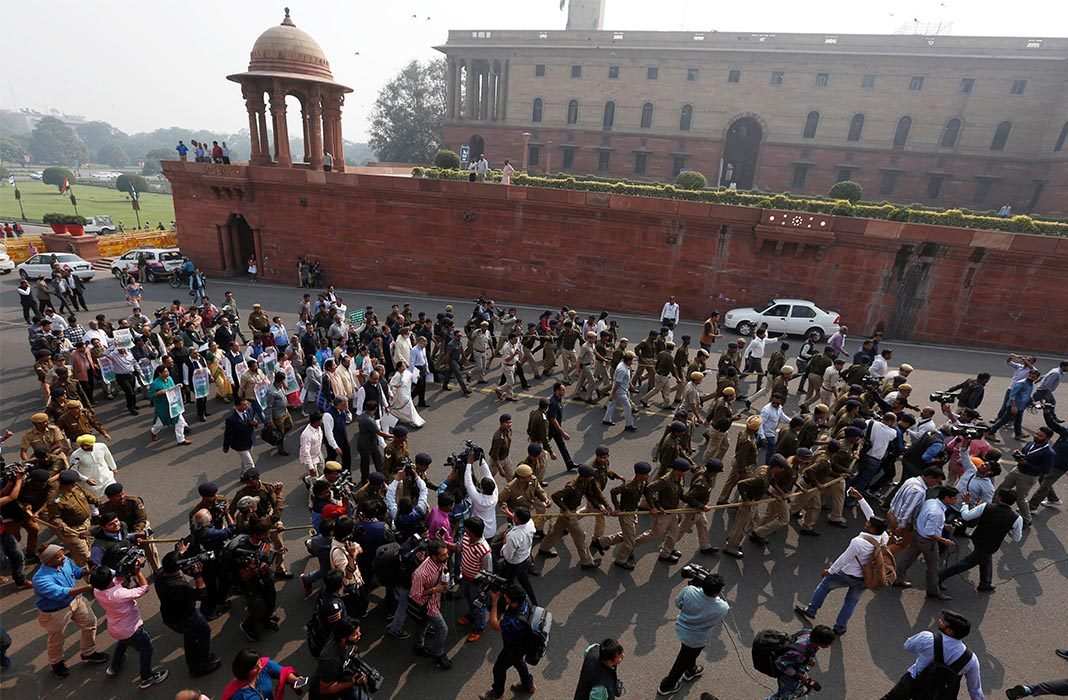While Modi claims that demonetization has helped the common man, his opponents are seeing this as a golden chance to attack him and increase their chances in six poll-bound states
By Kalyani Shankar
Prime Minister Narendra Modi like a true showman announced demonetization on November 8 in a dramatic way. To maintain secrecy, even his cabinet colleagues were confined to the cabinet room, minus their mobiles, while he revealed the reform measure. Understandably, no advance notice could be given in case hoarders took advantage.
The move to make some currency illegal overnight has been done with a view to check black money. Currency worth Rs 16.4 lakh crore are estimated to be in circulation, of which the banned notes—Rs 500 and Rs 1,000—account for 86 percent. According to experts, around 12 to 14 percent of this could account for untaxed money and counterfeit notes, the rest being invested in real estate, jewelry and gold assets and stashed away abroad.
Modi is not the first PM to resort to this measure, though the jury is still out about its success. While Modi himself was preparing for the currency reform for almost an year, power minister Piyush Goel had informed the Rajya Sabha that a decision to his effect was taken by the RBI board “on October 20”, and that the prime minister announced it 18 days later.
BRICKBATS FOR MODI
Though initially Modi won praise from everyone—cabinet colleagues, party, Sangh Parivar, corporate India, commentators, foreign investors, leading chambers of commerce like FICCI and CII, international think-tanks and global rating agencies, the brickbats did not take too long in coming.

The adverse social impact has been immediate and widespread with long queues outside banks across the country. In rural areas and small towns, the effect has been catastrophic, not to mention small farmers. And what has Modi’s response been? A teary-eyed PM said in a speech in Goa recently: “Cooperate with me and help me for 50 days and I will give you the India you desired.” In another meeting in UP, Modi said: “After demonetization, the poor are enjoying a sound sleep while rich are running from pillar to post to buy sleeping pills.”
While demonetization was part of the BJP’s poll manifesto, party strategists expect it to severely cripple the money power of its opponents. There are six states—UP, Punjab, HP, Manipur, Goa and Gujarat—going to the polls next year and this move will affect the BJP’s rivals.
While demonetization was part of the 2014 BJP manifesto, party strategists expect it to severely cripple the money power of its opponents. There are six states going to the polls next year and this move will affect the BJP’s rivals. The party is expecting to perform well in Uttar Pradesh, Punjab (where it is ruling in alliance with the Shiromani Akali Dal), Himachal Pradesh, Manipur (where it tried to topple the Congress), Goa and Gujarat (states where the BJP rules). The stakes are high and the BJP is not taking any chances.
DIVERSIONARY TACTICS
But has Modi made a political blunder? This move could upset his party’s key support base—small traders and businessmen—as transactions have slowed down considerably. But their support is essential in next year’s polls. Modi probably seeks to create a support base that is non-sectarian. With the poor and salaried middle class behind him, he believes that small businessmen and traders might be mollified once the machinery starts moving again. There is also a realization that the government’s achievements have not been up to expectations and a diversion is necessary.
But at the political level, the demonetization has not gone down well. The Left has taunted him by calling him “Modi Antoinette”, with CPM leader Sitaram Yechury calling this “Tughlaq Raj”. The Congress compared him to Benito Mussolini and Adolf Hitler. The problem for the opposition was to find a way to ensure that the BJP does not run away with the credit for launching a war against corruption. In one deft stroke, Modi seems to have decapitated the non-NDA alignment.
But this is not so. While the opposition was initially in a Catch-22 situation, demonetization has come as a godsend for it. While Modi has termed the reform as a battle for the common man, the opposition feels that it is precisely this group which is facing hardship. As the winter session of parliament was starved of issues, this has become a moot point to attack the government. Some BJP’s allies like the Alkali Dal and the Shiv Sena have also joined the dissenters, probably to emphasize their distinctiveness. Opposition criticism ranged from the timing of the move to faulty implementation, unpreparedness and not looking at other options. However, barring Mamata Banerjee and Arvind Kejriwal, the others have refrained from demanding a roll-back of demonetization.
UNITED OPPOSITION
Bihar chief minister Nitish Kumar and his Odisha counterpart, Naveen Patnaik, are smarter than the others as they realize that the issue could go either way and preferred to let others raise the pitch. Ironically, it also forced two sworn enemies—SP chief Mulayam Singh Yadav and BSP supremo Mayawati—to come on the same page. The TMC and the Left, which cannot see eye-to-eye, are also part of the opposition unity. And for the first time, Congress leader Rahul Gandhi emerged as the party’s face in parliament.

However, there are cracks in this unity too. While the Congress naturally wants to lead, Mamata has taken center-stage by mobilizing other parties, including NDA allies like the Shiv Sena. Mamata wants to prove that she is a national leader. Also, her party was probably hit by the measure. All these leaders are competing with each other in demonstrating that they are fighting for the common man to keep their constituencies safe.
The opposition has taken the fight to the streets and also in parliament. It is now planning a dharna in parliament and will meet the President, hold jan sabhas, have individual and joint programs to keep the issue alive. The Parliament session is bound to be another washout.
It is clear that the government had not anticipated the magnitude of the crisis. Nor is it likely that people’s misery will end in 50 days. It could go well into 2017 if one takes into account the logistics involved in printing new notes and their distribution. The enormity of the challenge has brought out the weakness in governance.
While Modi holds the cards now, it is obvious he is riding a tiger. He has already hinted that the second phase of attack on black money will be announced soon on benami property, bullion and jewelry, the sectors where black money has been channeled into. His game plan will be successful only if he can win public support and if demonetization is implemented properly.
The election results of 2017 will show if Modi’s gamble did, indeed, work.
Lead picture: Parliamentarians and leaders from various political parties march towards Rashtrapati Bhavan against the government’s demonetization move. Photo: UNI


